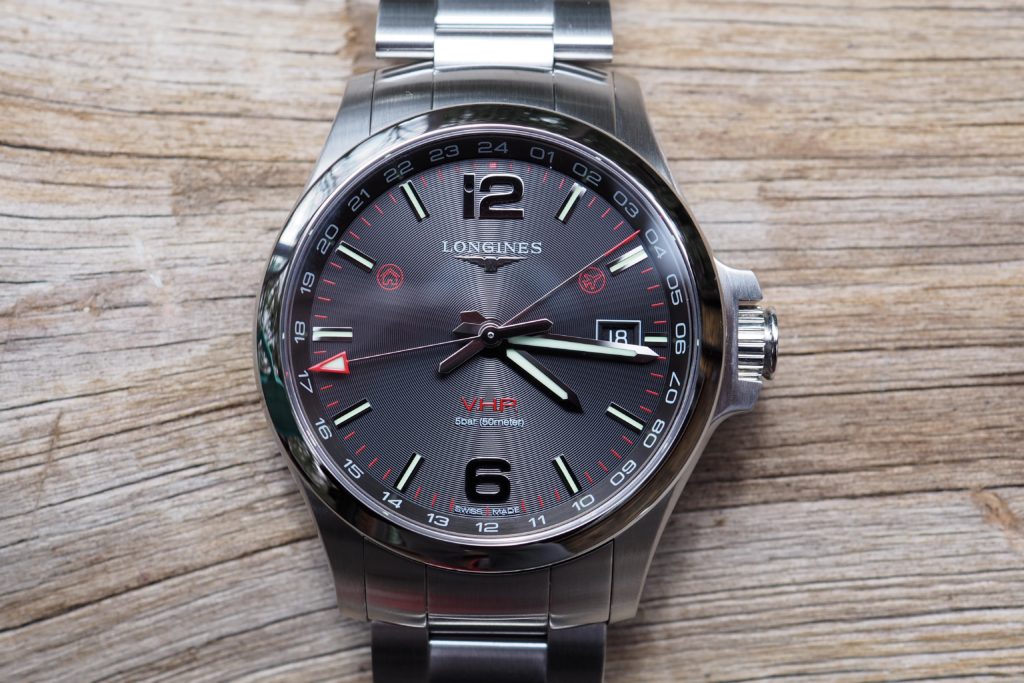
When you spend as much time as I do reviewing quality watches, it’s easy to get caught up in beautiful cases, intricate movements, and unique dials that are works of art in their own right. In and of themselves, there’s nothing wrong with these features. But focusing on them too much, you can lose sight of a watch’s primary purpose: telling the time.
Now, most automatic movements do a fine job of ticking away the hours. But what if you need to keep track of time in more than one location? For some people, this is a purely theoretical concern. But if you’re a frequent flyer, you might want to keep track of what time it is back home. Here, I’ll be explaining the difference between GMT watches, dual time watches, and world time watches. I’ll also walk you through how to set them and use them.
GMT Watches

A GMT watch is designed to show both your present time and GMT, or Greenwich Mean Time. The primary index displays your current time, while a secondary scale on a rotating bezel displays GMT. There are typically two crowns, the first of which sets the time, and the second of which rotates the outer bezel.
When you first receive your GMT watch, the first thing you need to do is set your local time. If you need to, check your manual to determine which hands are the minute and hour hands, and which one is the GMT hand. Normally, this should be easily visible, but that’s not always the case.
Once you’ve set your local time, the next thing to do is adjust the GMT time. To do this, determine how many hours apart your time is from GMT. For example, if you live in New York, your local time will be GMT -5:00, so GMT will be five hours ahead. Use the second crown to adjust the outer bezel until it’s the appropriate number of hours ahead or behind. Keep in mind that the GMT bezel is based on 24-hour time, so you will need to do a little mental math if you’re not used to 24-hour time.
Dual Time Watches

Dual time watches are similar to GMT watches, in that they’re designed to show you two times at once. However, they’re typically used to show you the time in two random locations: for example, your current location and your home, rather than your current location and GMT. In practice, the difference is purely academic. You can use a dual time watch as a GMT watch or vice-versa without running into any problems.
In practical terms, the main difference is in the nature of the display. Rather than displaying the secondary time on a bezel, it’s displayed on a subdial or a pair of subdials. Typically, you’re going to see two, one for the hours, and another for the minutes. The scale is also typically a 12-hour scale, rather than a 24-hour scale as on a GMT watch. That said, most dual time watches have a day/night indicator so you can keep track of the 24-hour time.
Setting a dual time watch is generally easier than setting a GMT watch. One crown will control the primary hour and minute hand, while another will allow you to set the time on the subdials.
World Time Watches

Compared to the last two watch types, a world time watch is more about fashion than it is about function. This isn’t to say that they’re useless. It simply means that they’re mostly designed for looks. The main part of the dial can have a variety of looks, and can include a variety of complications. However, there’s an outer chapter ring, which displays 24 time zones, typically with 24 city names for reference.
There will typically be a crown, which is used to set the time, while a pusher can allow you to jump through the time zones. Generally, there’s a single pusher, and you can only skip forward. However, there are more complicated, more expensive options that feature two pushers for skipping back and forth as desired. When you change time zones, the hour hand will automatically jump forward or backward by an hour.
Setting a world time watch is relatively simple. First, use the pusher to select your own time zone. Next, use the crown to set the time. From there, you can easily change time zones when you travel. As I said, this is mostly a cosmetic feature, but it does have its place for world travelers. In particular, the design is generally less cluttered, although that will vary from watch to watch.
There are only two downsides to this mechanism. First, they tend to be more complex, and therefore more expensive, than GMT or dual time watches. Second, they don’t allow you to easily set the time for odd, half-hour time zones such as India Standard Time, which is GMT +5:30.
Hi Matthew,
Nice article covering the basic types. I have variations of two of the watches featured in photos: The Longines high-accuracy quartz GMT, which is a fantastic high-tech watch for the price, and a different but similar version of the heavy Ball Engineer automatic GMT. These are great watches for keeping track of two timezones, e.g., home and away when traveling.
While you seem a bit dismissive of the functionality of the world-timer style, ironically I find it the most useful type when NOT traveling. It allows you to read the time of any timezone (or multiple timezones) in the world at a glance. This is very useful when dealing with colleagues, customers, and suppliers scattered all around the world, as is often the case in our globalized economy. Nearly every day of the week I work with people located in four or more timezones in two or three continents, often in the same Zoom meeting!